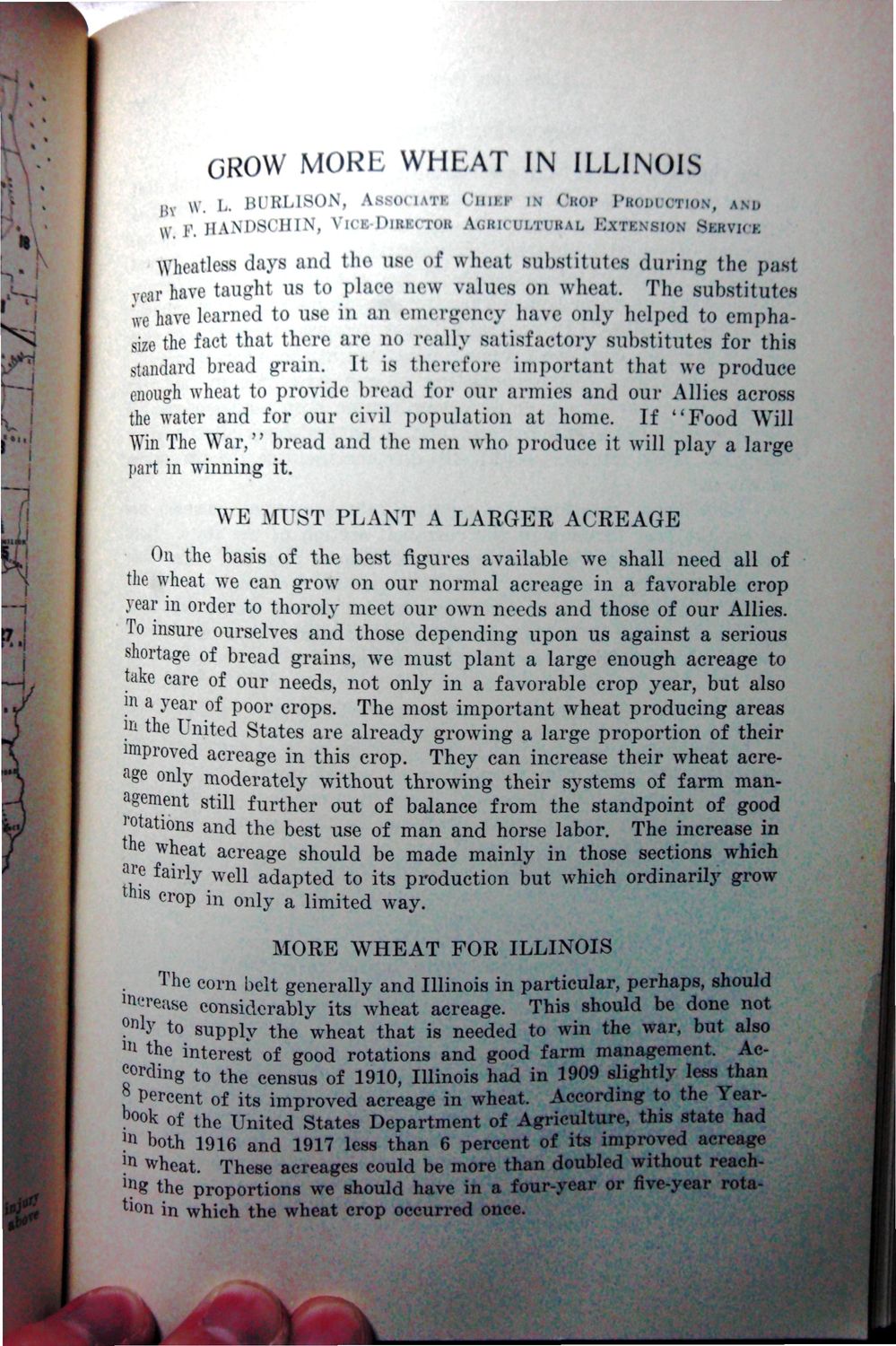Caption: War Publications - WWI Compilation 1923 - Article 30
This is a reduced-resolution page image for fast online browsing.

EXTRACTED TEXT FROM PAGE:
GROW MORE WHEAT IN ILLINOIS \v. L. BURL1SON, ASSOMATE CHIKP IN CHOI- VROUVOHOM, AM, W F. JIANDSCHIN, VICE-DIRECTOR AGKI« ULTOIAL BXTOUBON SKRVKK . Bl Wheatless days and the use of wheat substitutes daring the past vear have taught us to place new values on wheat. The substitutes we have learned to use in an emergency have only helped to emphasize the fact that there are no really satisfactory substitutes for this standard bread grain. It is therefore important that we produce enough wheat to provide bread for our armies and our Allies across the water and for our civil population at home. If "Food Will Win The War," bread and the men who produce it will play a large part in winning it. WE MUST PLANT A LARGER ACREAGE On the basis of the best figures available we shall need all of the wheat we can grow on our normal acreage in a favorable crop year in order to thoroly meet our own needs and those of our Allies. To insure ourselves and those depending upon us against a serious shortage of bread grains, we must plant a large enough acreage to take care of our needs, not only in a favorable crop year, but also fn a year of poor crops. The most important wheat producing areas J the United States are already growing a large proportion of their B improved acreage in this crop. They can increase their wheat acreage only moderately without throwing their systems of farm management still further out of balance from the standpoint of good rotations and the best use of man and horse labor. The increase in e w heat acreage should be made mainly in those sections which are fairly w e ll adapted to its production but which ordinarily grow this crop in only a limited way. MORE WHEAT FOR ILLINOIS The com belt generally and Illinois in particular, perhaps, should Urease considerably its wheat acreage. This should be done not nl ? y to supply the wheat that is needed to win the war, but also 111 the interest of good rotations and good farm management. According to the census of 1910, Illinois had in 1909 slightly less than ° Percent of its improved acreage in wheat. According to the Yearbook of the United States Department of Agriculture, this state had n ] both 1916 and 1917 less than 6 percent of its improved acreage ;n wheat. These acreages could be more than doubled without reacting the proportions we should have in a four-year or fivo-year rotation in which the wheat crop occurred once.
|